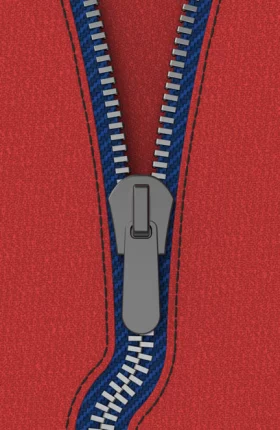The COVID-19 outbreak may be ubiquitous, but its impact on global commercial activity is anything but uniform. Grocers have done well as consumers stock up on staples, for instance, but fashion and luxury (F&L) companies have felt the pinch of the pandemic acutely. As a result, they need to develop drastically different inventory and sales strategies to heal their businesses and emerge with a chance to thrive post-COVID-19. That means adopting an agile strategy that we call three-season management, in which current and future inventory is managed in a way that will boost stock monetization and profitability across at least three retail seasons.
New Creative Responses Needed
F&L companies find themselves in their current difficult spot because virtually all stores in this category have been shuttered and because many brands lack sufficiently robust or compelling online channels to reach and attract large numbers of shoppers to e-commerce. In addition, consumers have become increasingly budget conscious—many must make do with diminished incomes or are generally not inclined to purchase items that could be deemed unnecessary.
Based on an analysis of numerous COVID-19 recovery scenarios, BCG estimates that fashion retailer sales will be down as much as 35% in 2020 compared with last year and luxury store owners will face sales deficits that could reach as high as 45%. All told, three-quarters of F&L companies could suffer cash shortages.
The short-term responses to these challenges have been similar: most F&L companies we talked to are focused on cutting expenses by negotiating with landlords to postpone rent payments for five months or so, reducing the workforce, restructuring credit terms, and applying for government support. In addition, among the few retailers that had well-functioning e-commerce channels, steep online discounting—50% off on all products and free shipping—is a favored option.
However, these steps are only Band-Aids to cover the immediate wounds; they will do little to ensure the long-term survival of the company. Which is why three-season management is so essential now.
Prior to COVID-19, merchandising plans were initiated 12 months in advance of a season and, for each category, assumed deviations in sales from one year to the next of only about plus or minus 2% on a like-for-like basis. Moreover, in most cases, these projections were not made for individual stores but for clusters of stores—and they often assumed that these clusters were homogeneous, each store in them serving the same types of consumers with the same shopping preferences, even if individual stores were located in geographically or economically disparate areas.
But the pandemic has made such static planning methods obsolete. The sheer drop-off in sales is one reason, but equally important are the fundamental shifts in F&L retailing that have emerged. Online sales are up notably, picking up as much as 5% in additional market share since the COVID-19 outbreak began, an increase in five months that equals all of its market share gains for the past five years. And certain F&L categories have been particularly popular during the lockdown period—home wear and beauty supplies, for instance. By contrast, sales of handbags, suits, dresses, and sunglasses have declined, by about 50% in some markets.
Digital channel growth and category volatility in the F&L sector are unlikely to go away anytime soon. And depending on the trajectory of the virus or the development of a satisfactory treatment or vaccine, changes in consumer sentiment will waver from month to month and from place to place.
With their landscape in flux, F&L retailers must replace their traditional, somewhat sluggish, year-to-year planning approaches with three-season management, which relies on granular-data-based assessments of past and present consumer behavior, store by store and week by week, to generate a three-season inventory and sales management plan that is continuously updated, particularly as sales results diverge from forecasts because of changing circumstances. Under this approach, products, pricing, and marketing over three seasons are customized for consumers online and in stores and tailored to changes in product line popularity across diverse regions. Profits are maximized in the current season because the management plan creates the flexibility to alter merchandising programs as conditions change, even as it assesses the impact this will have on future seasons.
Three-season management is not a perfect strategy for every retailer. For instance, it will provide better returns for companies that have a medium-to-large global presence and sales that are not overly dependent on current fashion trends. (See Exhibit 1.) However, our calculations indicate that by following this strategy, most F&L companies can expect double-digit improvements in gross margin and cash flow into spring and summer of 2021 (SS ’21) and beyond relative to the likely results of a massive current season liquidation strategy.
The Template for Three-Season Management
To illustrate how three-season management works in practice, and to assess its benefits, it is useful to examine how a typical $1 billion retailer with an average retail sales price (RSP) of $20 to $30 per item and a gross margin of 60% to 65% (in normal times) would adopt this strategy. Like most F&L retailers, this company would, because of the pandemic, be saddled with an additional 20% to 30% of unsold stock from the SS ‘20 collection compared with a standard season. The magnitude of this number and the lingering outsize effects of COVID-19 on sales channels and consumer attitudes mean that the standard playbook for dealing with excess inventory—heavily discounting time-sensitive items with big promotions—is not viable or advisable in this environment.
In implementing three-season management, the retailer would take four actions when it reopens for business:
- Postpone sales of about 40% of current-season stock to subsequent seasons.
- Optimize stock distribution across channels, stores, and countries. For instance, an area that was hard-hit by the pandemic would not be an ideal place for a large amount of inventory given that demand will lag.
- Reduce fall and winter 2020 (FW ’20) and SS ’21 buying targets while maintaining some flexibility to increase orders or to reorder based on last-minute consumer trends.
- Avoid massive stock liquidation scenarios of remaining collections as much as possible, limiting end-of-season discounts to about 55%.
By postponing a large portion of current stock to future seasons, the company would be able to selectively focus and reduce its promotional discounts during the current end-of-season sales. In turn, this would ensure the highest returns on items in each channel, especially if these discounting and seasonal sales determinations are based on advanced customer analytics and supply-and-demand analytics.
Combined with reductions in product purchases in FW ’20 and SS ’21, three-season management would yield gross margins of 30% to 40% for this retailer in the current season, compared with only 15% to 20% in the heavy-discounting stock liquidation scenario, despite much lower revenues in the former. In subsequent seasons, gross margins will be about the same for both approaches because the retailer will have to either transition from a season inflated by discounts to more normal price levels or handle unsold old stock within its product mix.
Potential cash flow improvements are also material. By reducing and delaying FW ’20 and SS ’21 inventory purchases, short-term cash flow would be relatively equal in both the three-season and the stock liquidation scenarios. But by 2021, a retailer using the three-season strategy would benefit from an additional $70 million to $90 million in cash on hand made possible by the lower future stock purchases; this can amount to a 20-percentage-point improvement in cash flow.
At its core, an expanded planning horizon of three seasons involves finding an optimal balance among these axes:
- When to Sell. How much stock to push to subsequent seasons versus how much to sell now has to be determined.
- Where to Sell. Extra stock needs to be allocated across multiple store formats and sales venues, especially e-commerce and omnichannel, and not offered solely through the usual outlets.
- What to Sell. Carry-over and less fashionable products should be postponed as much as possible to future seasons and integrated into future collections.
- Which Price to Sell At. The level of discounts must be calculated on the basis of the previous three axes and the financial situation of each company.
Different Considerations for F&L Segments
The ideal COVID-19 responses of F&L companies over three seasons will depend on their individual degree of freedom to review and refresh inventory and buying plans. That freedom is dictated by the seasonality and fashion sensitivity of their collections and their need to protect the brand from devaluation. Using that criteria, the F&L market can be divided into four main types, two each in the fashion segment and the luxury segment , that should determine at least in part their three-season strategies. (See Exhibit 2.)
Companies in the luxury segment will generally be in the best position to postpone stock sales of current-season products. “Iconic luxury” retailers, which mainly sell evergreen and iconic products including jewelry, watches, bags, and accessories that hold their value over years, can effortlessly revive their collections in subsequent seasons without compromising critical brand value. “Fashionable luxury” players, characterized by seasonality, trendsetter items, and catwalk presentations, will be in a slightly less advantageous spot because their product lines can age badly over time. But they have strategic options: they can keep the current-season products at full price in stores for a few additional months or mix them with the next season’s assortment, and they can sell overstock in off-price channels in the coming seasons—all of which will maintain the value of their brand.
By contrast, some fashion companies will not be able to embrace three-season management as aggressively as their luxury counterparts, chiefly because many of their products are seasonal, like sweaters or bathing suits, or can go out of style easily. In particular, “fashionable fashion” retailers, whose products are largely seasonal, will be tempted to discount heavily when stores reopen; for these brands, moving products quickly, amassing whatever cash is available, will seem like a priority. That, however, will not be enough to recover their losses. Instead, these companies should implement as much of the three-season management strategy as possible, examining their stock closely for specific products that they can hold onto for future sales and for regional preferences that could inform their inventory plans. “Functional fashion” stores are in a better position than their fashionable counterparts and can adopt three-season management with less risk.
Focus on Elastic Action Plans
By implementing three-season management, F&L companies should structurally transform their decision-making processes, making them faster, more effective, and more dynamic and at the same time more sensitive to the ways that inventory and supply choices today may affect future cycles. These new processes must leverage the use of advanced analytics, employ enhanced forecasting scenarios about the post-COVID-19 market rebound and beyond, and mine real-time global demand signals to quickly shift strategies as the market dictates. It is essential for companies to “read and react”—that is, to continuously update their strategies based on changes in demand and performance.
We envisage an action plan with three pillars. (See Exhibit 3.)
Baselining and Dynamic Stock Management. Constantly update demand forecasts, keeping a close eye on sales trends and stock on hand through a variety of data points. These projections should be based on forward- and outward-looking criteria, measuring multiple internal and external signals for any demand uncertainty or fluctuation—in the past, these signals were generally overlooked, but it’s crucial now to keep them in view.
Use these forecasts to draw up stock liquidation strategies, assessing their impact on buying and potential financial outcomes. In-season promotions should be chosen in real time and increased in frequency. Inventory should be allocated and replenished only upon emerging need in order to minimize unprofitable stock in stores. Final decisions about what and how much to order must be made at the last possible moment by using short-cycle supply chains that can rapidly address the latest relevant trends.
Merchandising. Optimize stock allocation across three seasons (or more) based on expected demand in channels, geographic regions, and individual stores. Determine stock to be kept for future seasons versus stock to be cleared. Adjust buying targets for subsequent seasons. Adjust buying targets for next season and earmark purchasing budgets to forecasted future inventory orders. Store stock allocation should be determined in a much more granular way than before; instead of being viewed in clusters, stores should be perceived as individual outlets with diverse consumer preferences. That will lead to localized decision making, which allows the retailer to take immediate advantage of any positive or negative performance deviation from the original sales and inventory plan.
Pricing and Markdowns. Analyze pricing for each category and subcategory, arriving at best prospects for sales and profitability in the current season. Set discounts based on product elasticity and salability, and evaluate tradeoffs (such as sales versus reductions in profit margins) with all liquidation channels.
A Season for New Directions in F&L
Every year, F&L companies, like all retailers, go through the process of determining how much of their surviving stock to discount immediately and how much of their inventory to postpone for subsequent seasons. That tends to be a relatively simple exercise.
Not this year. With the pandemic utterly upending current sales and future projections, F&L retailers must continuously assess inventory, consumer demand, P&L forecasts and actuals, and channel performance. This means that F&L companies must deploy sophisticated analytical technology capable of collecting and assessing huge troves of data in near real time to support high-level decision making. At the same time, they must be more inclusive in assembling the executive team that will use this data to determine future strategies, working in fast and agile ways, a task that becomes easier as these companies adopt advanced analytic technologies and applications. Separate silos for different channels, geographies, price setting, and finance will only handcuff the company from making good choices. Particularly given that regions will emerge from the virus at dissimilar paces, counterintuitive P&L options may be the most appropriate ones to choose.
There is no way to sugarcoat the impact of COVID-19 on F&L. But in our view, companies that are most adroit in implementing an intelligent three-season management strategy will potentially come out of this difficult period with a greater appreciation for the types of technology, data, decision making, and organizational structure that are necessary to succeed in the face of a rapidly shifting retail environment. In turn, that could inform a coherent and optimal strategy even when COVID-19 is a distant memory—and one that leaves companies better prepared for future disruptions.















